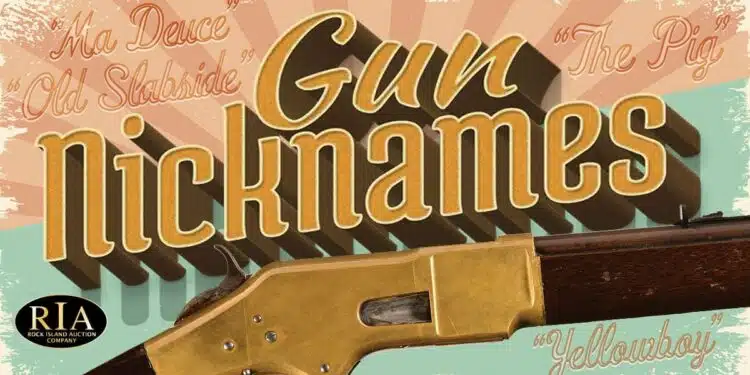By Joe Engesser
This post is brought to you by our friends at Rock Island Auction Company.
Sometimes a gun nickname is a term of endearment. Other times they stem from fear or detraction. Slang gun names can be derived from a weapon’s appearance, its sound when firing, a defining attribute, its impact on the battlefield, or sometimes as a clever play on the firearm’s official designation. However they originated, the most memorable gun nicknames include an element of truth and help cement a weapon’s legacy.
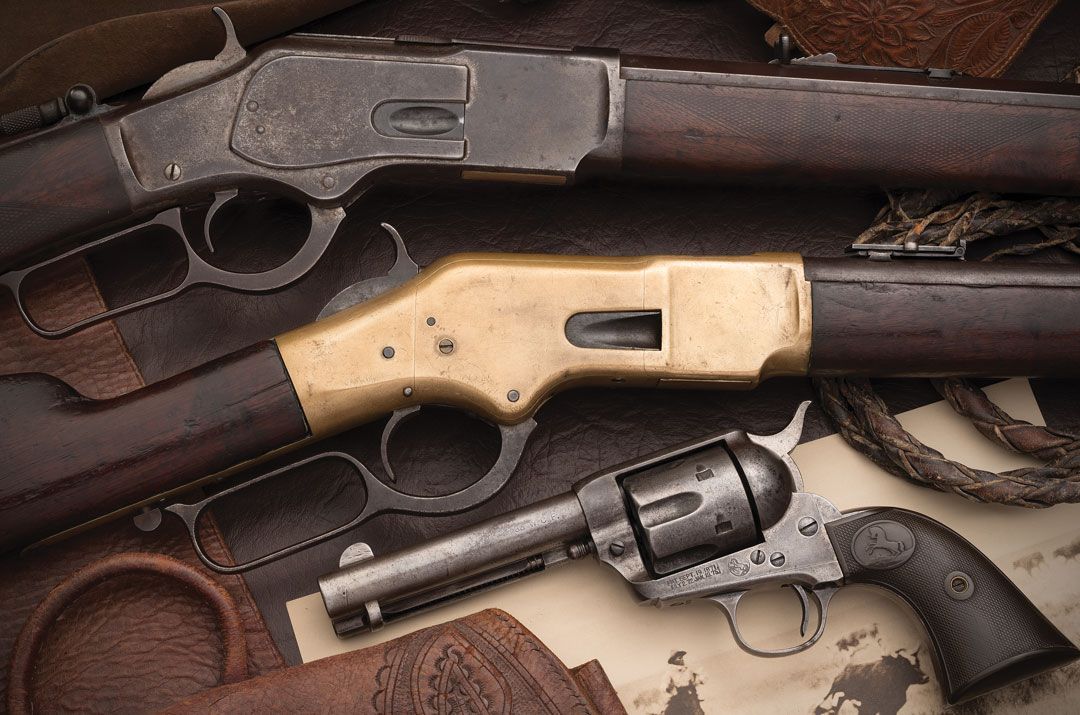
In an effort to narrow our list, we’ll try to avoid overly broad-brush terms like smoke wagon and boomstick, as well as artillery slang like Stovepipe, Thumper, and Screaming Mimi, and instead keep our focus on firearms. Here are our selections for the most famous gun nicknames, presented in alphabetical order.
The BAR
Slang gun names and military culture go hand-in-hand, and the BAR acronym was as catchy as it was obvious. Developed near the end of WW1, the M1918 Browning Automatic Rifle was quickly adopted by the US Military and became a signature weapon for American infantry in WW2 and beyond. The gun’s nickname sprang from the weapon’s initials, “B-A-R”, a term that was easy to remember and soon became the rifle’s most common unofficial designation.
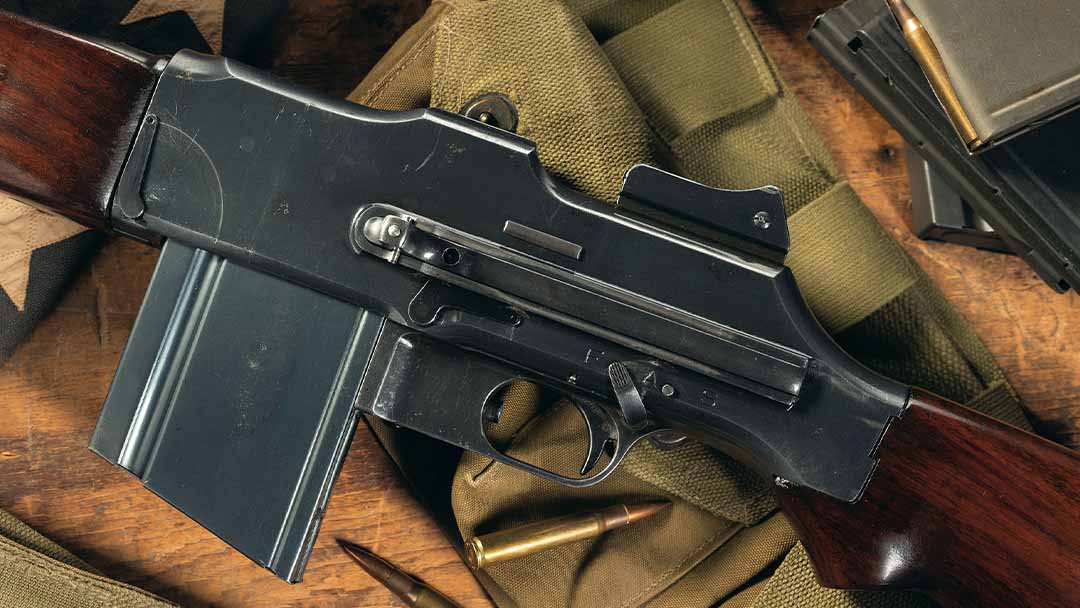
The Belgian Rattlesnake
The brainchild of U.S. Army Lt. Col. Isaac Newton Lewis, the light machine gun design that bore his name was initially rejected by the United States. Lewis set off across the Atlantic to produce his gun in Europe instead, where it was first adopted by Belgium and Britain.
With the outbreak of WW1, the invading Germans faced fierce resistance from the Belgian Army and their limited but strategically deployed Lewis guns. The distinctive “tacka-tacka-tacka“ rattling of the weapon and the hit-and-run tactics employed by the Belgian forces earned the gun the fitting appellation of “Belgian Rattlesnake” from the Kaiser’s troops.
The Broomhandle
The Mauser C96 self-loading pistol’s “Broomhandle” moniker quickly caught on in the early 20th century, a reference to the handgun’s unique round wooden grip. The gun’s nickname soon became a catch-all term for the entire series of C96 pistol models manufactured by Mauser and its subsequent foreign copycats. Mauser eventually embraced the popular nickname and even used it in official promotion campaigns in the Western market.
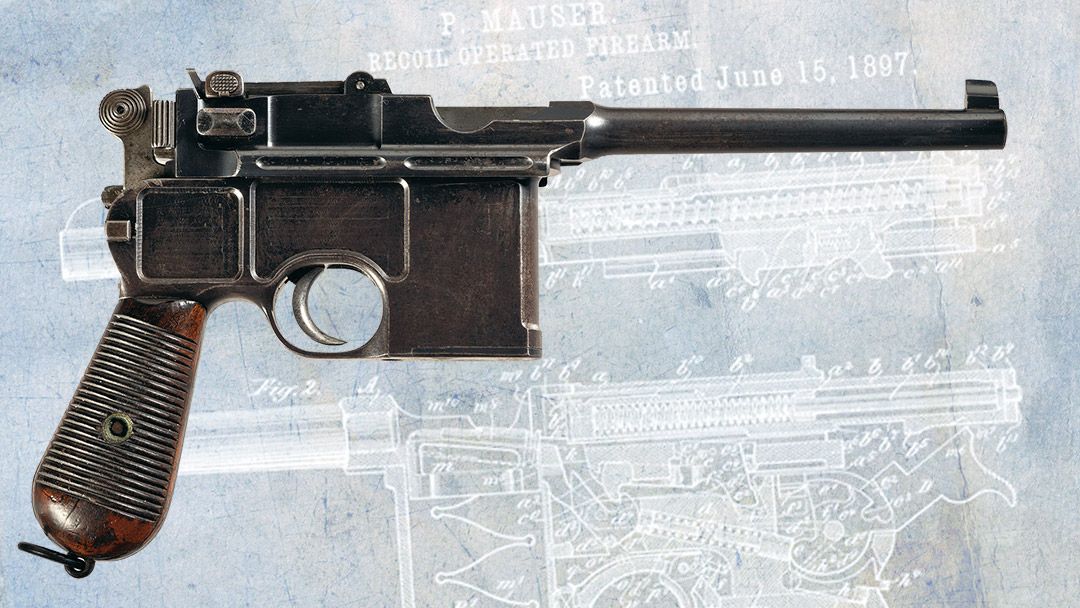
The Brown Bess
One of the most famous gun nicknames in firearms history, the Brown Bess was used to denote the typical British infantry muskets that served from 1722 through the early 1830s. In 1785, English author Francis Grose published an index of informal words titled ‘Classical Dictionary of the Vulgar Tongue’ and his entry for the Bess reads, “‘Brown Bess. A soldier’s firelock. To hug Brown Bess; to carry a firelock, or serve as a private soldier.”
The Brown Bess nickname appears to be derived from the slang “Bess,” which was an 18th-century reference to women of ill repute. The term “brown” simply meant drab, ordinary, and plain beyond just the subject’s color, as seen in the colloquial for the “Brown Bill” polearm, a farming tool often fielded by lowly infantry conscripts. This denotation was applied to the Brown Bess musket in the same way.
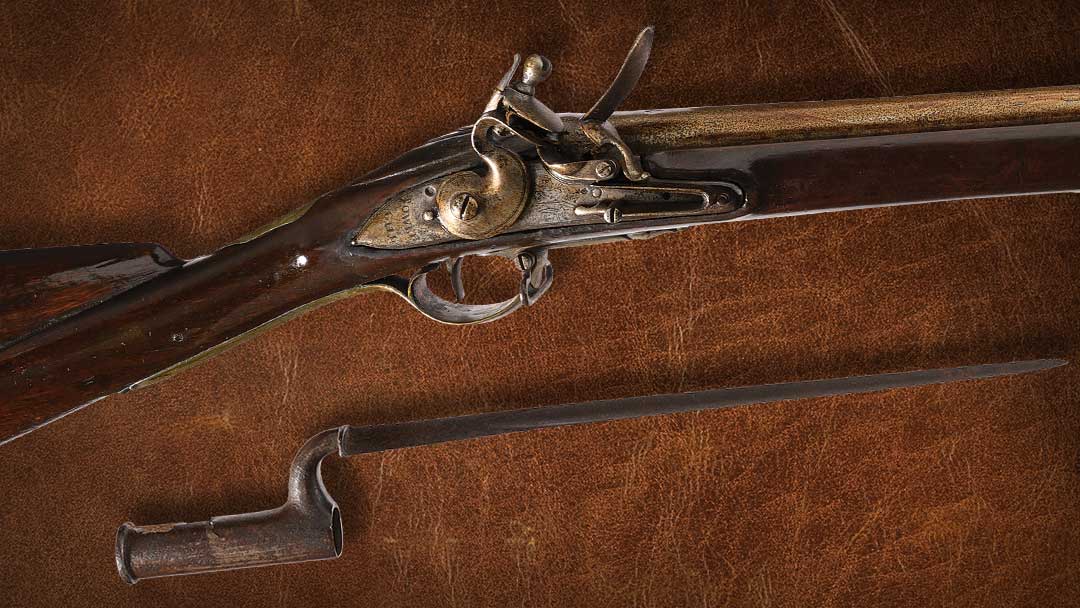
The Burp Gun
Dubbed the “Burp Gun” for the sound it made during extended fire, the PPSh-41 submachinegun was widely fielded by the Red Army in WW2. The burp gun fired 900 rounds a minute, nearly double the rate of the German MP40 it faced down in the streets of Stalingrad. The PPSh-41 was comparatively easy to produce, and a copy of the gun called the Type 50 was later adopted by Chinese and North Korean troops.
“Once we heard that sound—‘Burp! Burp!’—it was a frightening sound,” recalled British veteran Gerry Farmer, who served with the 1st Battalion of the Royal Fusiliers in the Korean War. “It meant the Chinese were there. I think the sound of the burp gun and what it represented was more frightening than the rounds that came out of the weapon.”
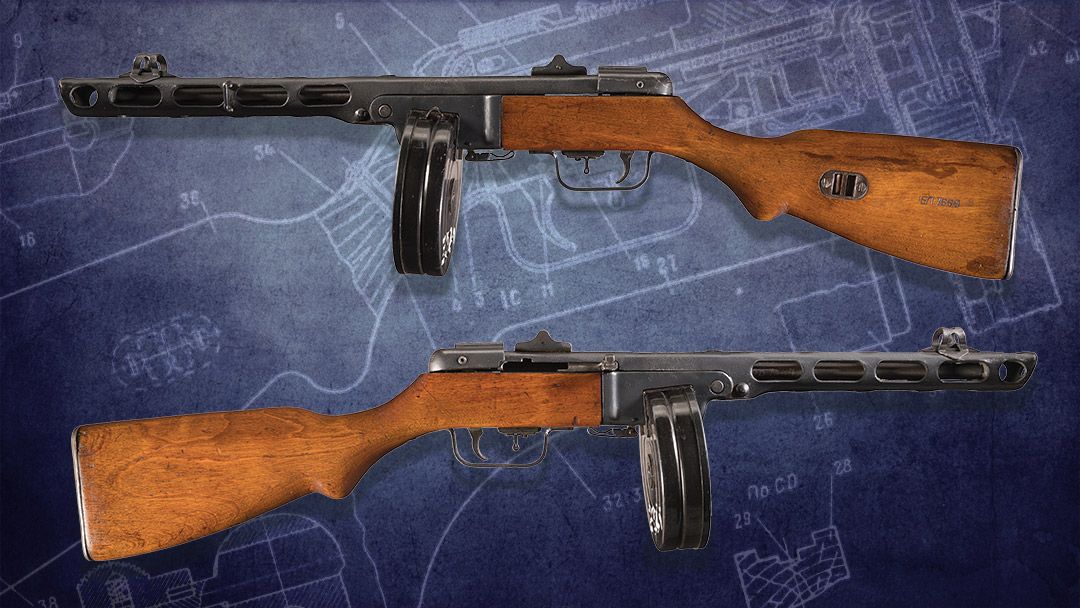
The Devil’s Paintbrush
You don’t earn a gun nickname like “The Devil’s Paintbrush” without making a terrible impression. While Gatling guns had demonstrated the utility of high-volume fire on the battlefield, the Maxim design, the world’s first true recoil-based machine gun, perfected the strategy to a brutal degree.
With its cheaper cost of production and absence of a manual crank, the Maxim gun supplanted its Gatling gun forerunner and saw widespread adoption in Europe. The defensive advantage offered by the Maxim gun’s overwhelming firepower contributed to the trench warfare stalemates and high death tolls of WW1, and it’s easy to see why the “Devil’s Paintbrush” epithet caught on with the soldiers who faced this deadly efficient weapon.
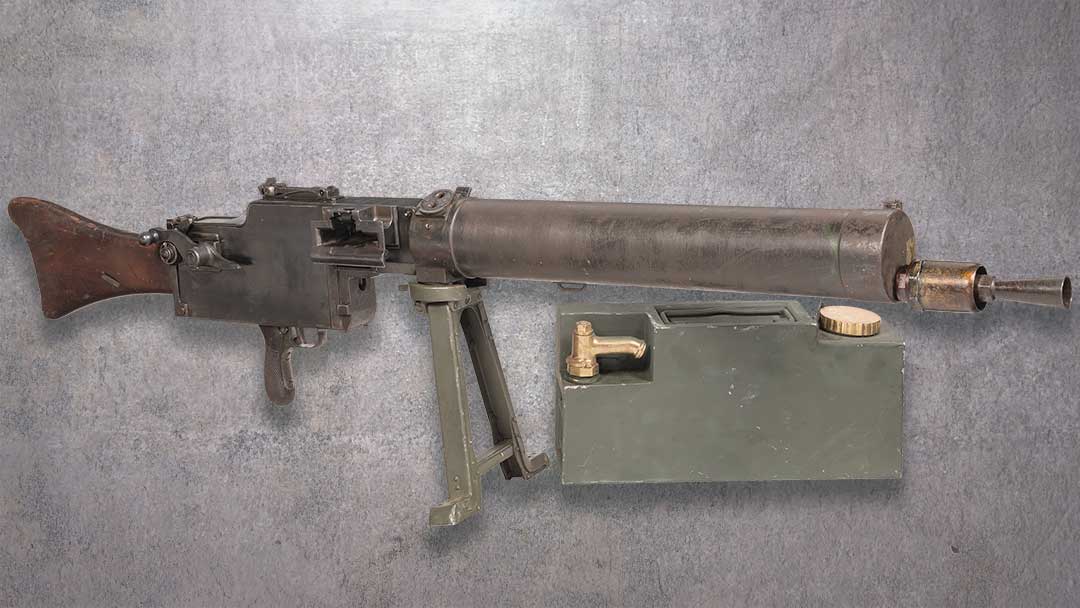
The Figure 8
Patented in 1856, this Savage & North black powder revolver is as distinct as it is rare. Its informal gun name stems from the figure 8 shape made by the cocking lever and trigger guard. Using the operator’s middle finger, the ring-style cocking lever is pulled after each successive shot to advance the six-shot cylinder, automatically cocking the hammer.
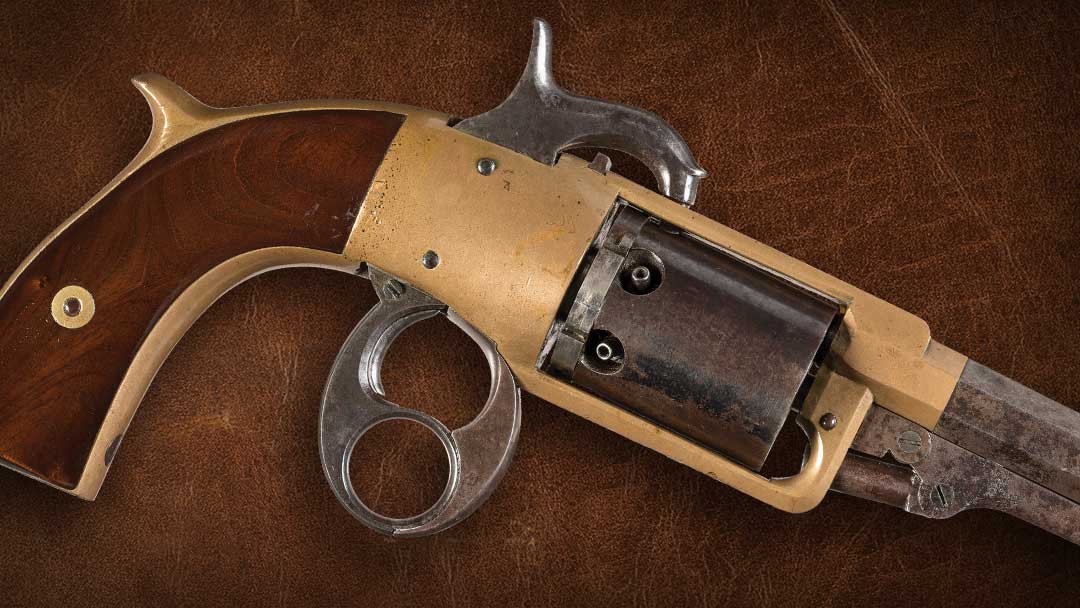
The Grapevine Carbine
The Civil War saw the development of numerous breach loading carbines, including the unique-looking Gwyn & Campbell. This .52 caliber gun was nicknamed for its long hammer and serpentine-shaped trigger guard, qualities especially evident in the scarcer Type I Cosmopolitan Arms Co model. The “grapevine” nickname was less commonly applied to the Gwyn & Campbell Type II carbine, which saw service with numerous Union Cavalry units.
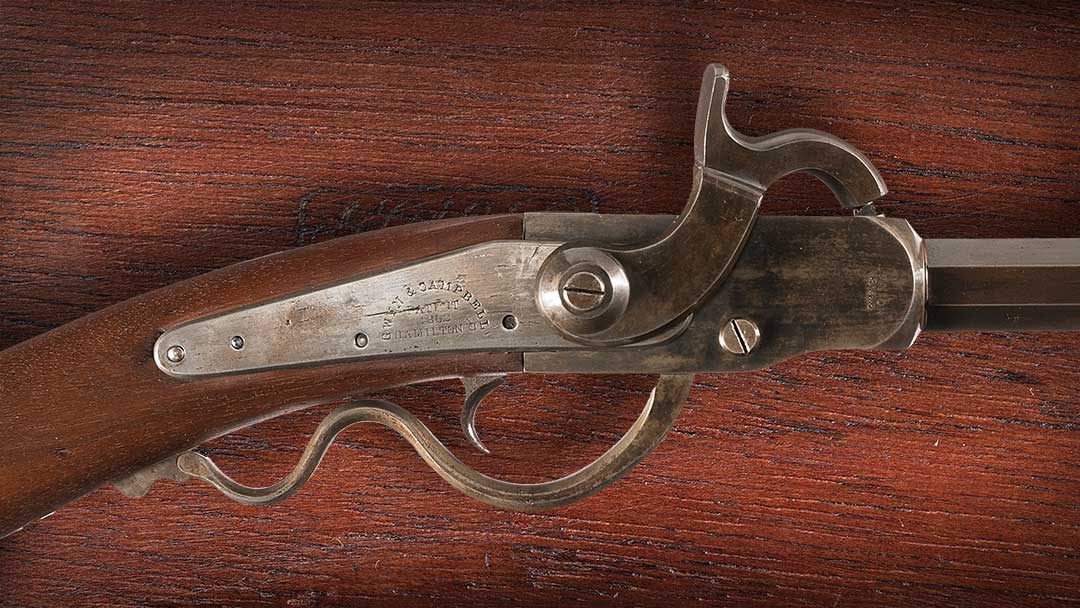
The Grease Gun
Another memorable weapon nickname bestowed by everyday troops, the M3 “Grease Gun” earned its title due to a close physical resemblance to hand-powered grease dispensers, a common auto mechanic’s tool of the period. In an effort to produce a cheaper and lighter alternative to the Thompson, inventor George Hyde developed a firearm that was stamped, riveted, and welded, taking on a crude, tube gun shape. The Grease Gun is an example of a gun nickname becoming more commonly known than its official designation.

The Gun that Won the West
Here’s a colloquial gun name almost everyone knows thanks to films like ‘Winchester ‘73’ and other popular Western movies, shows, and novels. The title “Gun that Won the West” didn’t officially emerge until early 20th-century advertising campaigns, a brainchild of Edwin Pugsley, a Winchester engineer who helped produce famous firearms like the Winchester Model 21 shotgun.
The sentiment behind the now-famous saying was grounded in the frontier era, as the Winchester 1873 rifle was a lightweight, reliable gun that was affordable to most settlers at a time when the Old West was filled with a danger for every treasure and opportunity.
Hitler’s Buzzsaw
Another gun nickname based on a blistering rate of fire, the MG42 machine gun was an imposing weapon to say the least. Called the most feared German gun on the WW2 battlefield, Hitler’s Buzzsaw was an upgrade from the already devastating MG-34. The MG42 machine gun’s high cyclic rate (about 1,200 rounds per minute) gave it a distinct and intimidating sound, very alien to Allied troops trained around slower-firing weapons. At that speed, individual gunshots are replaced with a steady, disturbing roar, earning the MG42 a terrifying reputation.
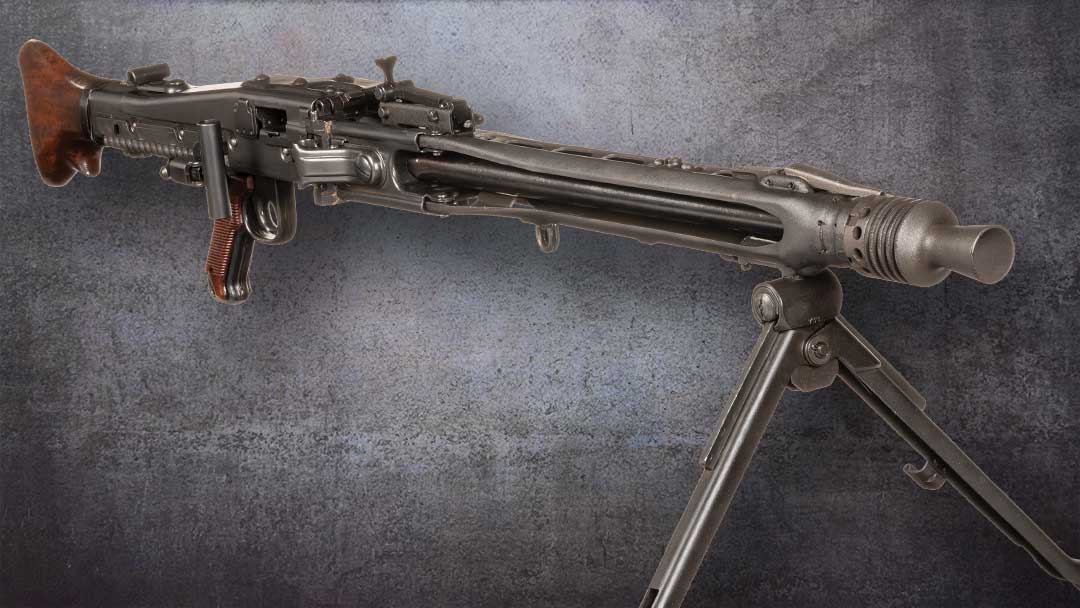
The Humpback
Known as “The Humpback” due to its trademark squared receiver, the Browning Automatic 5 is a versatile workhorse scattergun for all types of fowling and target shooting. John Browning’s 1903 recoil-operated design was the first successful semi-automatic shotgun and continues to be fielded by the modern sportsman today. Though often referred to as the Auto-5 or A-5, with period advertisements stressing how the firearm provided “Five shots under your fingers,” the Humpback nickname is what stuck the most.
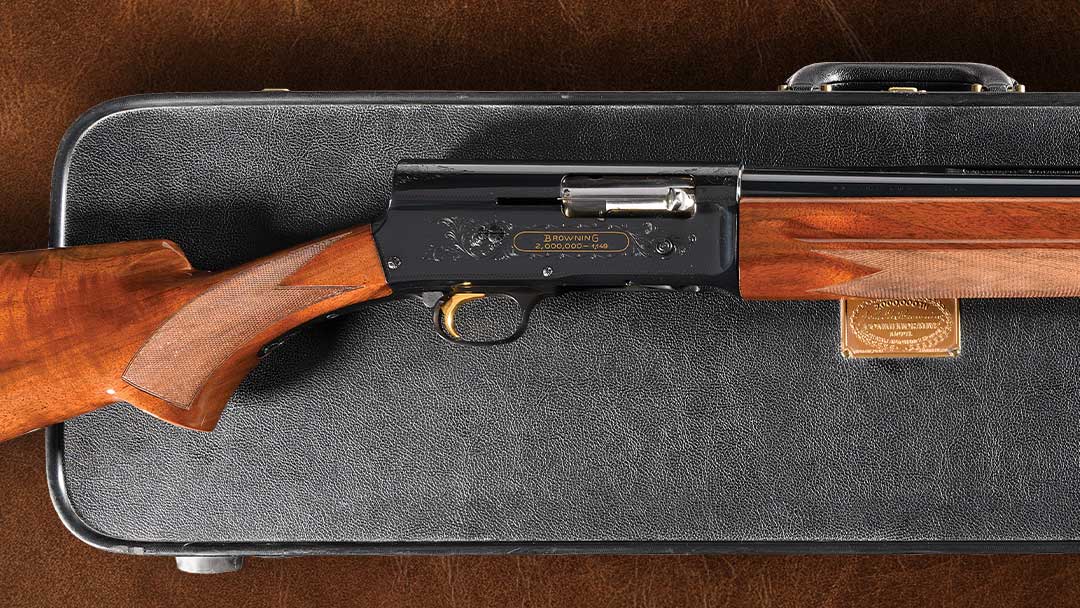
The Kentucky Rifle
This classic gun nickname for the American Long Rifle was coined from a song about the 1815 Battle of New Orleans titled ‘Hunters of Kentucky.’ Pioneered by German and Swiss gunsmiths who immigrated to the Colonies, the American Long Rifle combined numerous features from the Germanic Jäger rifle and English hunting designs that allowed backwoodsmen to shoot accurately up to 200 yards when hunting in the western wilds of Colonial America. Famed frontiersmen like Daniel Boone, Simon Kenton, and Michael Stoner relied on the rifle during their long hunts and during the eventual settlement of the Kentucky wilderness, where the rifle gained both its nickname and its legend.
The Lemon Squeezer
Widely dubbed “The Lemon Squeezer,” the Smith & Wesson Safety Hammerless, or Smith & Wesson New Departure revolver, earned its nickname from the grip safety on its backstrap which required a firm squeeze to operate, much like everyone’s favorite citrus juicing tool. This feature was touted by Smith & Wesson when the double action top-break revolver was introduced in 1888, advertised as making the gun “nearly impossible” for a child to fire.
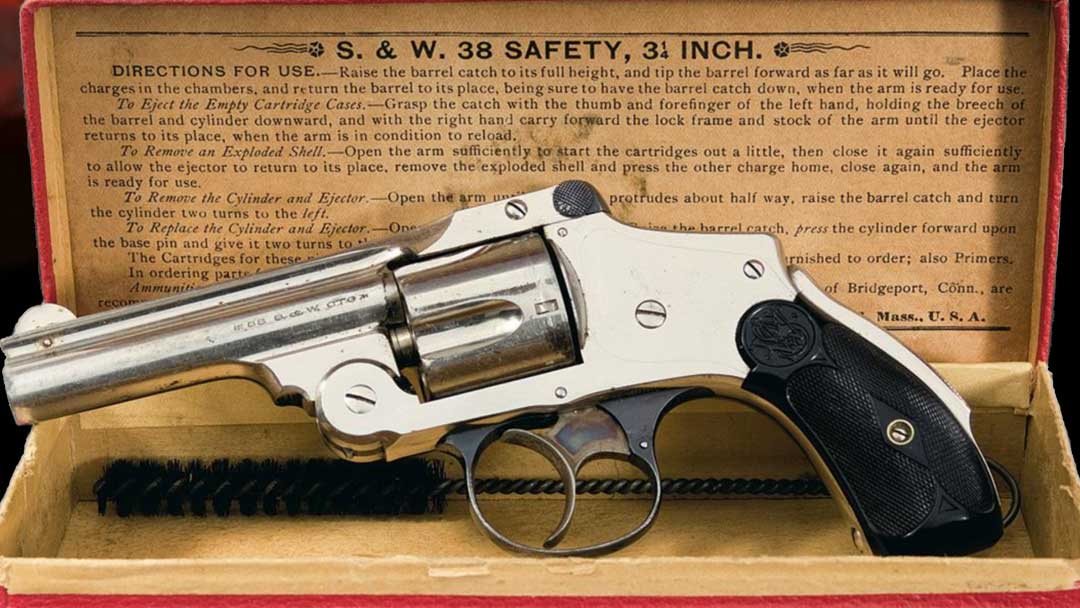
Ma Deuce
The M2 Heavy Machine Gun, a U.S. military mainstay since the 1930s, gained one of the most memorable service weapon nicknames around. “Ma Deuce” clearly plays on the M and 2 in the M2 designation, much like how the HU1 Helicopter was dubbed the “Huey.” It’s not hard to imagine the formal “Model” or “Mod” in Model 2 being shortened to “Ma,” a possible reference to the weapon’s other favored nickname, “The Mother of All Machine Guns.” Deuce has long been a slang for “two” in English, from the nickname of a second child to the gaming terms used for the two side of a dice and the number two card in each suit in a 52-card deck. Combined together, and you have an affectionate handle for a gun that became a second mother to the troops who relied on Browning’s .50 caliber behemoth to protect themselves and their company.
The Monkey Tail Carbine
Ordnance officers might get to choose official service weapon names, but the everyday infantrymen are always going to come up with a clever title that sticks. The single-shot capping breechloading rifles and carbines manufactured by Westley Richards were dubbed the “Monkey Tail” by the Boers in South Africa, a gun nickname that came from the lift up lever that was hinged to the rear of the barrel used to open and close the breech, thought to resemble a simian’s tail. A similar carbine design was offered in America by A.H. Waters of Millbury, Massachusetts, as pictured below.
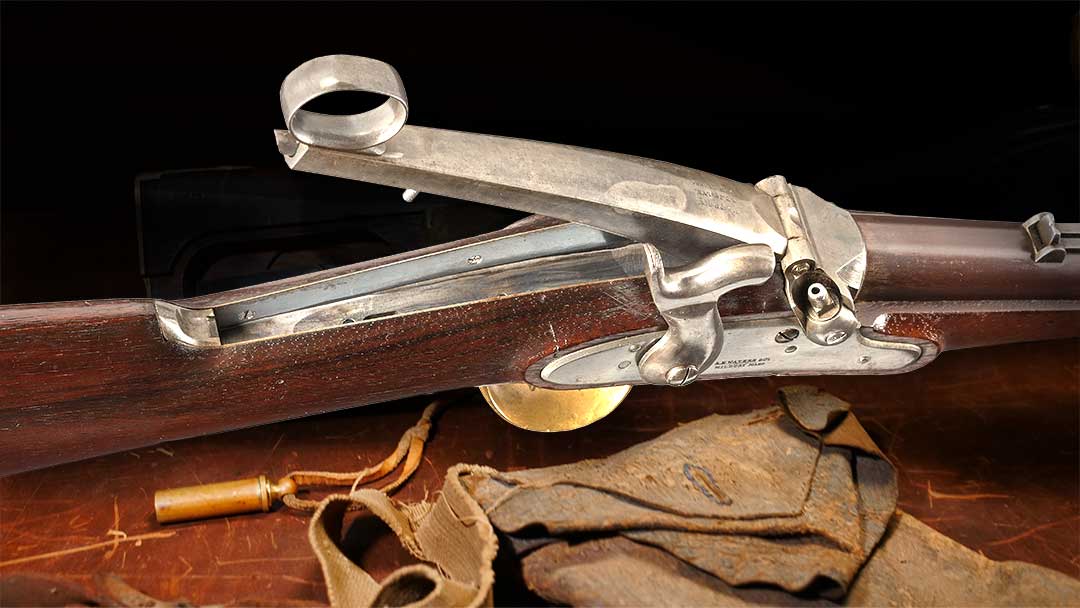
Old Slabside
The designation “Model of 1911 U.S. Army Caliber 45” is quite a mouthful, and it didn’t take long for soldiers to offer a laundry list of unofficial gun names for Browning’s new service pistol. “Old Bigmouth,” The Army Automatic,” “The Yankee Fist,” “Colt .45” or simply “Forty-Five” are some common favorites, but perhaps the most prominent is “Old Slabside.” The name alludes to the gun’s slab-type grip panels, one of the many distinguishing features the M1911 had over its military-issued predecessors like the Colt M1892 revolver.
The Right Arm of the Free World
Developed by Dieudonne Saive after WW2, the Fusil Automatique Leger (known by the famous FAL acronym) has been fielded by more than 90 countries around the globe. Formerly serving as NATO’s official battle rifle, the FN FAL was the Western counter to the Kalashnikov rifle favored by communist forces the NATO allies faced off against in countless conflicts throughout the Cold War. The “Right Arm of the Free World” became a symbol of resistance against the Soviet-led Warsaw Pact.

The Peacemaker
The six shooter. “The Great Equalizer.” “Judge Colt and his Jury of Six.” A plethora of clever nicknames were inevitable for the iconic Colt Single Action Army revolver. Many early gun names for cartridge Colts originated with Benjamin Kittredge & Co of Cincinnati. One of Colt’s biggest distributors, Benjamin Kittredge, came up with monikers such as “Frontier Six Shooter” for Colt SAA variants chambered in .44-40, the nicknames “Lightning”,“Thunderer,” and “Rainmaker” for the Model 1877 revolvers, and “Omnipotent” for the Model 1878 in .45 Colt.
In 1874, Kittredge started marketing the Colt Single Action Army to the civilian market as “The Peacemaker.” The nickname was far more appealing than official designations for the gun like “New Model Army Metallic Cartridge Revolving Pistol,” “45-caliber centerfire Colt Single Action Army,” “M1873,” or “The Model P.” The Peacemaker nickname played to the sentiment that an armed society was a polite society and the mere presence of the Colt revolver would dissuade any troublemakers from picking a fight they might not survive.
The Pig
As far as gun nicknames go, “The Pig” covers a lot of ground. We’re talking 23 pounds of belt-fed heavy metal that can eat a ton of ammo and chew through anything down range. The M60 often found itself in the mud and muck during combat, and its slow cyclic rate made this beast of a machine gun sound akin to a grunting boar. The Pig humped, sailed, and soared through Vietnam, Operation Just Cause, and the Persian Gulf War and continues to see service in specialized roles today.
The Potato Digger
First came its rather bland official first title, “M1895 Colt-Browning Machine gun.” John Browning’s Model 1895 quickly earned a more memorable slang gun name due to the gas port near the muzzle of the barrel that powered a spring-loaded lever arm to cycle the action, much like a lever-action rifle. This exposed operating arm, which projects down and away from the gun with significant force during the firing cycle, was known to dig holes in the ground if the gun’s tripod was resting on soft soil and sank low enough into the earth, and thus the Potato Digger connotation was born.

The Staple Gun
The Heckler & Koch P7 series is another name that doesn’t really roll off the tongue. Enter the “Staple Gun” moniker, or “Combat Staple Gun,” a nickname that originates from the squeeze-cocking lever on the P7 pistol grip that somewhat resembles older staple gun triggers.
The P7’s striker and sear only engage when the cocking lever on the front strap is depressed. Pull the lever and the striker is drawn back. Release the lever and the striker loses tension and returns to the resting position. This gives safety comparable to a double action only bobbed hammer semi-auto, where the pistol will not fire without positive user action, while still allowing a clean and relatively light single action style trigger pull as would be seen on a normal striker-fired pistol.
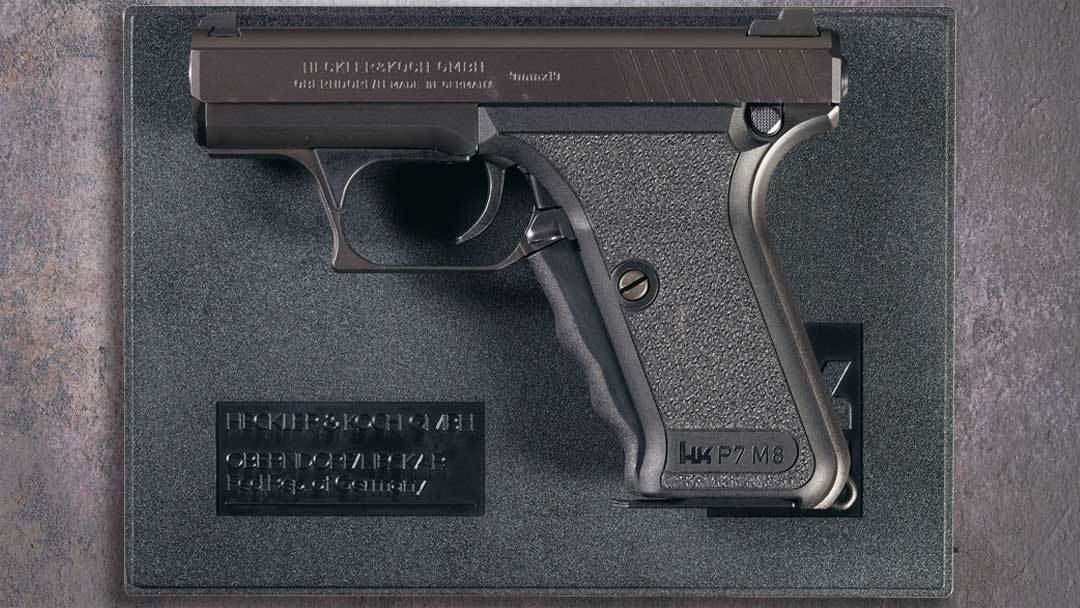
The Tommy Gun
“The Chicago Typewriter.” “The Street Sweeper.” “The rat-tat-tat.” The Thompson submachine gun gained dozens of colorful labels as it earned its reputation in the Melting Pot of South Side Chicago, toted by gangsters, bandits, and lawmen alike. Tommy Gun, the weapon’s most famous name, is a blue-collar shorthand for Thompson. Tommy was also a well-known term for British soldiers, and this connection might have proliferated the gun’s nickname after the British airborne adopted the Thompson Model M1A1 variant in the early years of WW2.
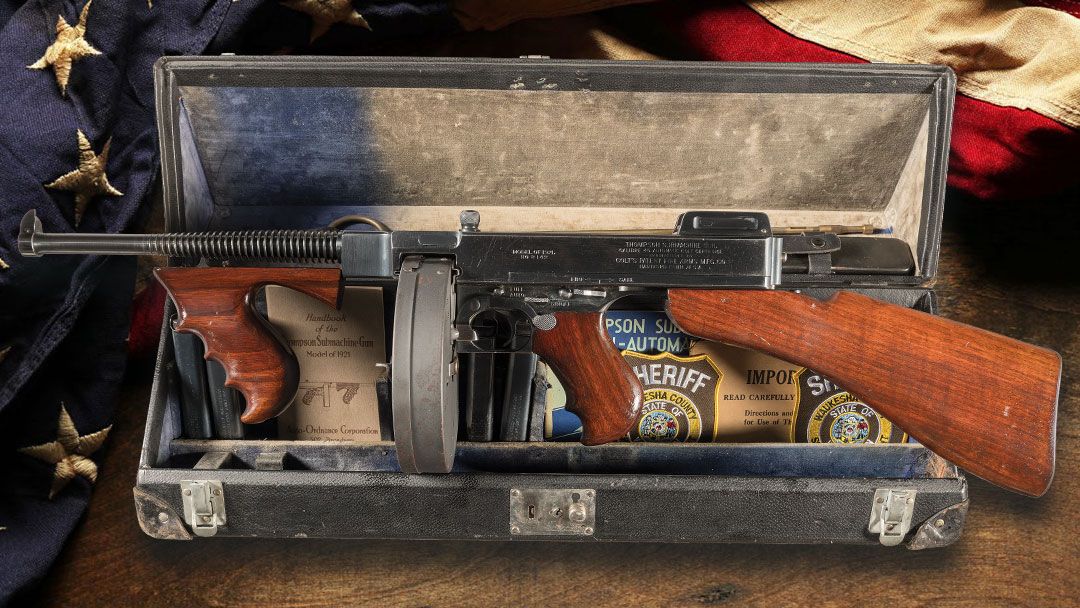
The Trapdoor
After the Civil War, the War Department wanted a standard-issue breechloading rifle that would chamber a self-primed, metallic cartridge. Erskine S. Allin of Springfield Armory proposed taking thousands of existing Civil War muzzleloaders and converting them by adding a hinged breechblock to the top of the receiver. This design resembled both the look and motion of a trap door panel when the user opened the rifle to load a new cartridge, giving the gun its now legendary name.
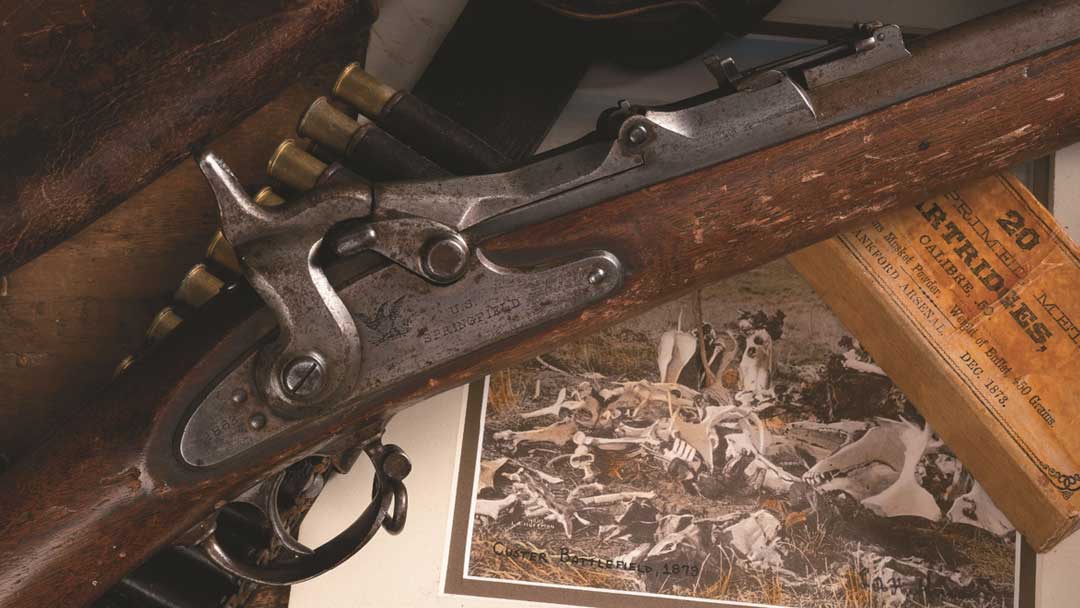
The Trench Sweeper
Another easy-to-understand gun nickname, in this case derived from the Winchester Model 1897 shotgun’s function in combat. The Model 1897’s shorter barrel made the weapon more maneuverable in the narrow trenches of WW1. Its lack of trigger disconnector allowed this combat shotgun to be slam fired as well, the act of holding the trigger while working the slide, repeatedly firing, ejecting a spent shell, and chambering a new shell.
A trained soldier could empty a trench gun of its six shells with devastating effect in less than two seconds. These traits made the Winchester Model 1897 ideal for the ferocious close-in fighting common to the Great War, earning the gun its Trench Sweeper nickname.

The Wonder Nine
The Wonder Nine is an informal gun name that applies to a broad series of semiautomatic 9 mm pistols that hit the market in the 70s and 80s. These guns share a number of features like DA/SA actions and double stack mags that could carry 12 or more rounds, with models like the S&W 59, the Beretta 92, and the CZ-75 being some of the earliest popular examples.
For advocates of these firearms, the Wonder Nine nickname referenced the ammunition, high capacity, and combination of features that made these pistols intuitive and easy to carry, though detractors used the nickname as a pejorative, including magazine writers who lamented the switch to these newfangled firearms over the revolvers that dominated the market and more traditional pistol designs like the .45 ACP 1911.
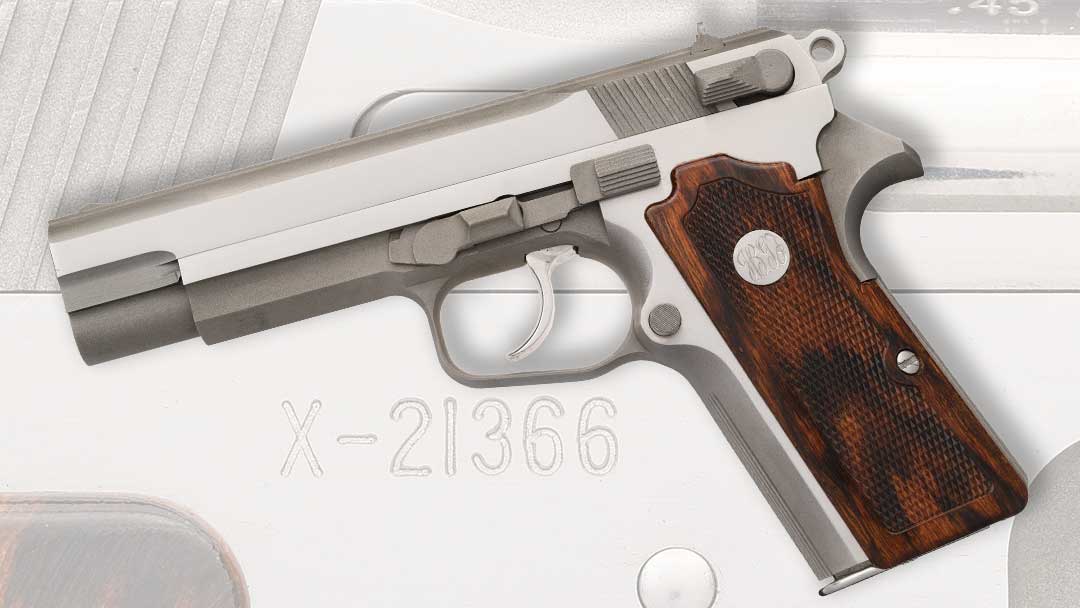
The Yellowboy
Some slang gun names are as simple as they sound. Like its Henry rifle predecessor, the Winchester Model 1866 had a frame composed of gunmetal, a strong type of bronze alloy made with copper, tin, zinc, and sometimes a small amount of lead. Also known as “red brass,” gunmetal was rust-resistant and easy to machine, and its unique muted yellow tint gave Winchester’s first lever action rifle its distinct look and Yellowboy nickname.
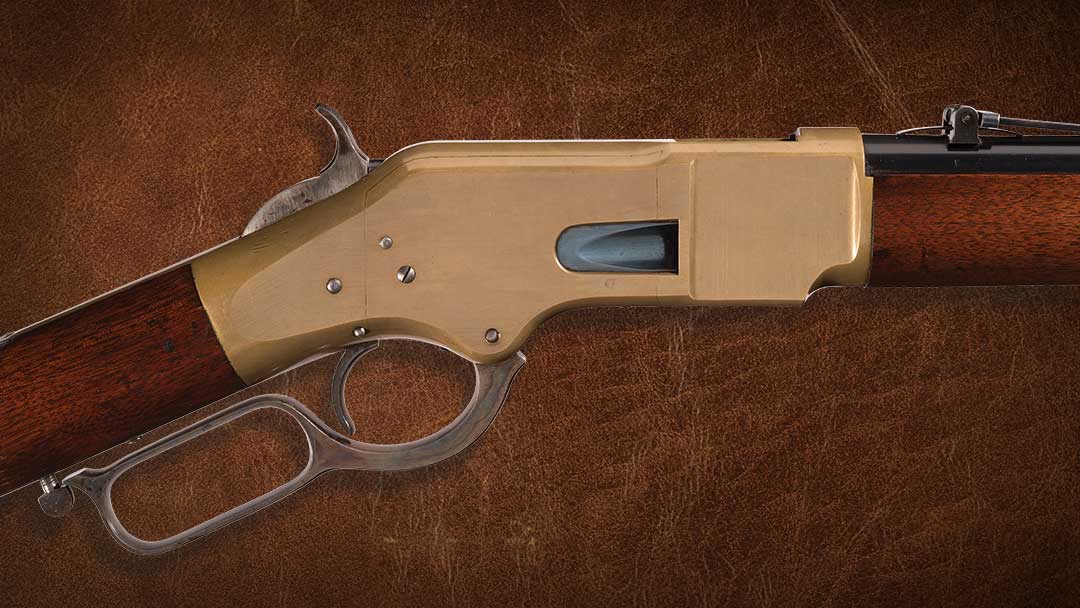
Gun Nicknames
Did we include your favorite gun nickname? Subscribe to the weekly Rock Island Auction newsletter to receive new gun blogs and gun videos each week on the firearms mentioned above, as well as some of those that didn’t make our list such as the M16 “Mattel Toy”, the Colt “Snake Gun” family, the Ghost Gun, and the Volcanic pistol, an official designation just as memorable as some of the colorful nicknames mentioned above.



